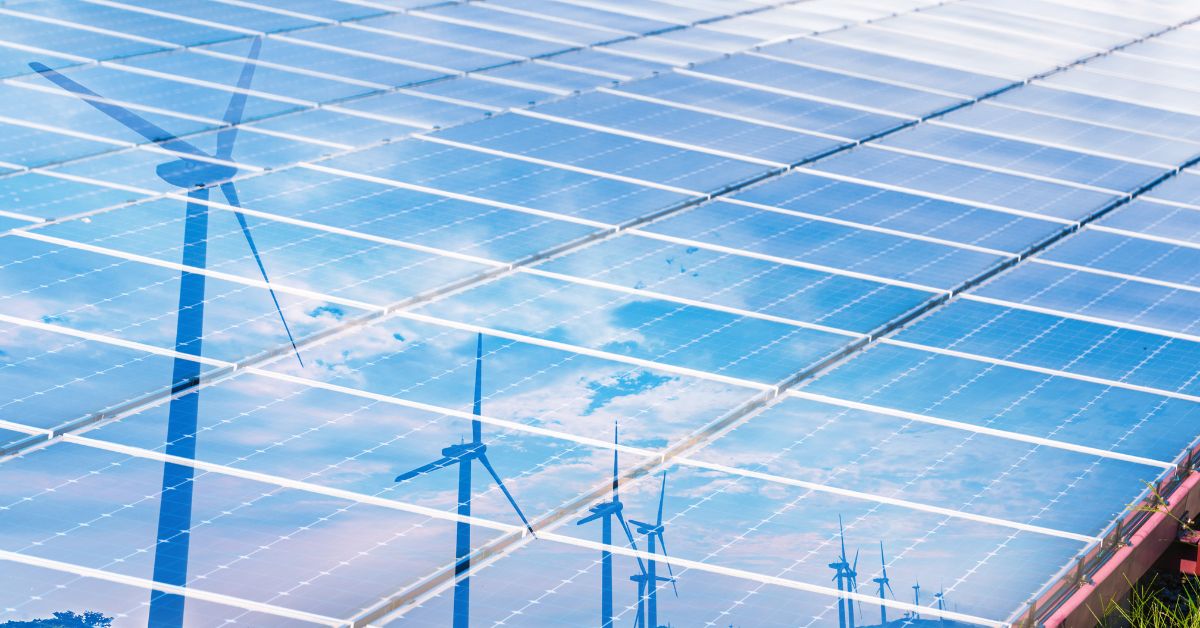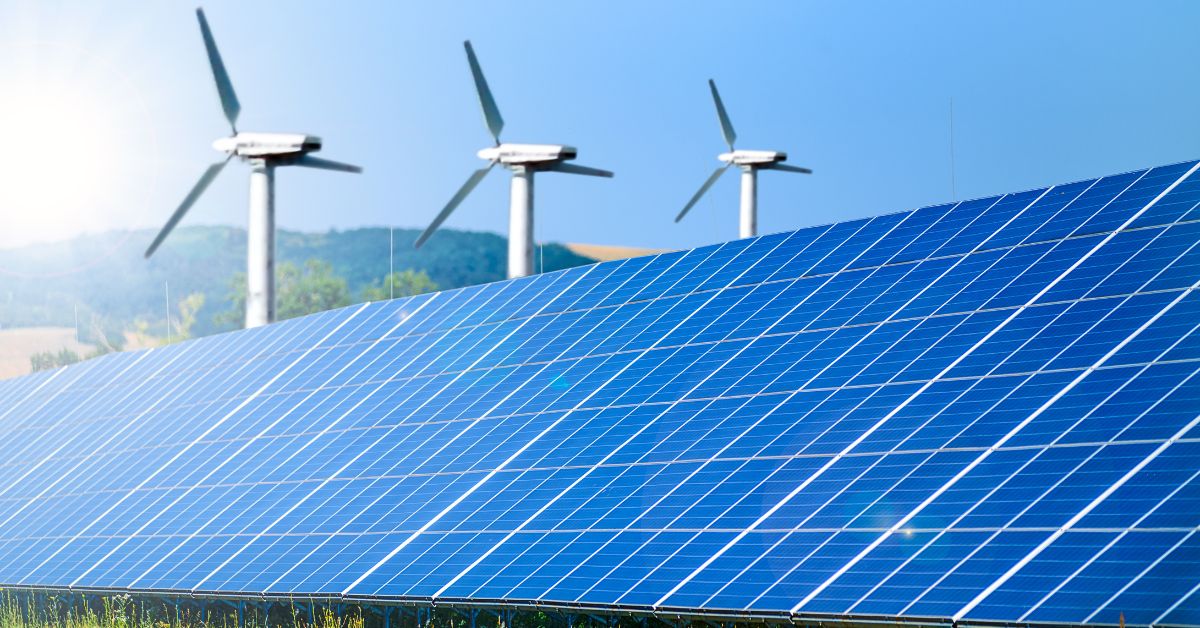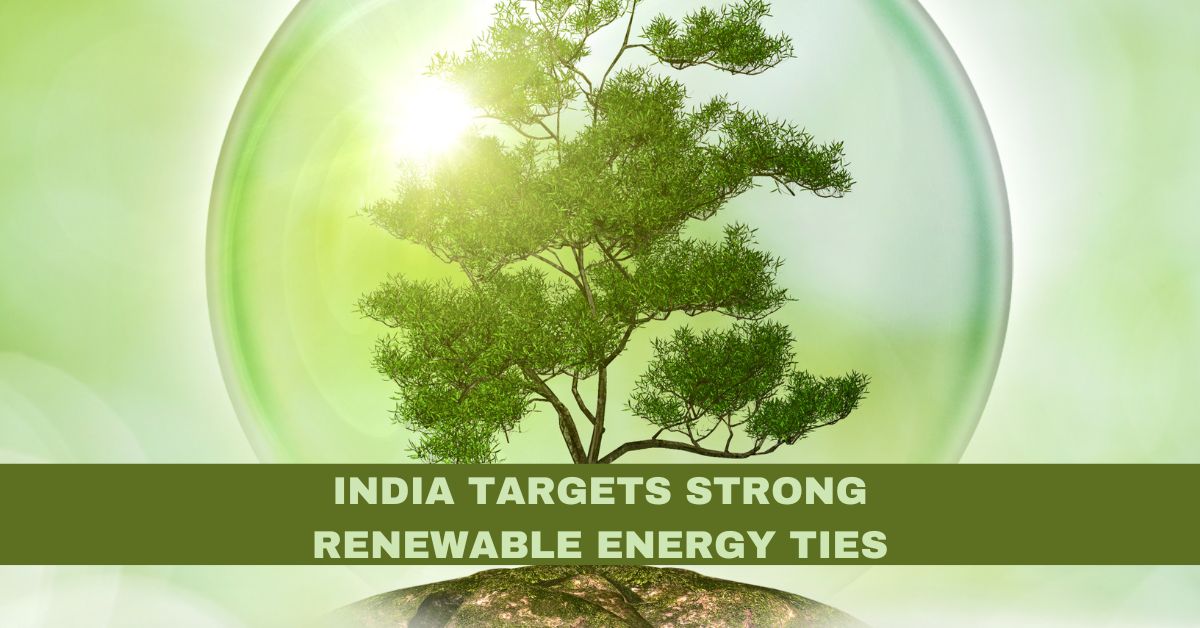India Targets Strong Renewable Energy Ties
Know the details about India Targets Strong Renewable Energy Ties, India is targeting robust renewable energy partnerships to strengthen its clean energy goals and reduce dependence on fossil fuels. The country aims to collaborate with global leaders in green technology, focusing on solar, wind, and bioenergy sectors.
By fostering ties with key nations, India seeks to accelerate investments in renewable infrastructure, enabling significant growth in its domestic energy production. These efforts align with India’s ambitious targets to achieve 500 GW of renewable capacity by 2030 and net-zero emissions by 2070. This commitment positions India as a leader in sustainable development while enhancing energy security and economic resilience.
Table of Contents
India Targets Strong Renewable Energy Ties
As the world grapples with the escalating threat of climate change, countries across the globe are looking toward cleaner, more sustainable sources of energy. Among the nations at the forefront of this energy revolution is India, a country that has demonstrated a firm commitment to developing and expanding its renewable energy capacity. In recent years, India has emerged as a global leader in the renewable energy, setting ambitious targets to reduce its dependence on fossil fuels and promote cleaner alternatives. The nation’s quest for energy transformation is not only about securing its energy future but also about becoming a key player in the global fight against climate change.
The country’s renewable energy ambitions are also tied to its economic and geopolitical strategy, as it seeks to strengthen its ties with other nations and position itself as a hub for clean energy technologies. India’s burgeoning renewable energy sector is a powerful driver of its green diplomacy, with the potential to reshape the global energy landscape.
This blog will delve into India’s renewable energy goals, its partnerships with other nations, and the challenges and opportunities that lie ahead. It will explore how India is leveraging its renewable energy sector to foster stronger ties with global partners and the impact of these initiatives on both the domestic and international fronts.
The Context of India’s Renewable Energy Ambitions
India’s renewable energy journey has been remarkable, particularly over the last decade. Historically, India was heavily dependent on coal, with fossil fuels dominating the country’s energy mix. However, the growing environmental concerns, coupled with the need for energy security and economic growth, led to a shift in focus toward renewable energy sources like solar, wind, biomass, and hydropower.

India has set ambitious renewable energy targets in line with its commitments under the Paris Agreement. The country aims to have 500 GW of renewable energy capacity by 2030, which includes 280 GW from solar energy, 140 GW from wind, 10 GW from biomass, and 10 GW from hydroelectric projects. These targets are not just numbers; they reflect India’s serious intent to transition toward cleaner energy sources and contribute to the global effort to limit temperature rise to below 1.5°C.
Additionally, India’s renewable energy drive is closely aligned with its larger developmental goals. As a developing nation, the energy demand is growing rapidly, and clean energy offers a sustainable way to meet this demand without exacerbating environmental degradation. Furthermore, the renewable energy sector is seen as a key source of employment generation, with the potential to create millions of jobs, particularly in rural areas.
Key Drivers Behind India’s Renewable Energy Push
Several factors are driving India’s renewable energy expansion:
1. Energy Security
India is the world’s third-largest energy consumer, and its energy needs are expected to double by 2040. Currently, the country relies heavily on imported fossil fuels to meet its energy demand, making it vulnerable to global price fluctuations and supply disruptions. By investing in renewable energy, India aims to reduce its dependence on imported fossil fuels and achieve greater energy security.
2. Environmental Concerns
India faces significant environmental challenges, including air pollution, water scarcity, and extreme weather events, all of which are exacerbated by climate change. The transition to renewable energy is seen as a critical step in mitigating these environmental risks and ensuring a sustainable future for the country.
3. Economic Growth
The renewable energy sector offers significant economic opportunities. The development of solar and wind energy infrastructure can attract investments, spur technological innovation, and create new industries. Moreover, renewable energy projects, particularly in rural areas, can provide much-needed employment opportunities and stimulate local economies.
4. International Commitments
India has made strong international commitments to combat climate change, most notably its pledge under the Paris Agreement to reduce the carbon intensity of its GDP by 33-35% from 2005 levels by 2030. Achieving these goals requires a rapid expansion of the country’s renewable energy capacity.
5. Technological Advancements
Advances in renewable energy technologies, particularly in solar and wind, have made these sources more cost-competitive with fossil fuels. The declining cost of solar photovoltaic (PV) systems and wind turbines has enabled India to accelerate its renewable energy deployment at a relatively low cost.
India’s Major Renewable Energy Initiatives
India’s renewable energy transformation is being driven by several key initiatives and programs:

1. National Solar Mission
Launched in 2010, the National Solar Mission is one of India’s most important renewable energy initiatives. The mission aims to promote the development of solar energy in India by creating favorable conditions for solar manufacturing, research, and installation. The mission originally set a target of installing 100 GW of solar capacity by 2022, a goal that has been largely achieved, positioning India as one of the world’s largest solar markets.
Solar energy has become the centerpiece of India’s renewable energy strategy, and the country’s solar power capacity has grown exponentially in recent years. The vast potential of solar energy in India, with its abundant sunlight, makes it a crucial component of the country’s energy transition.
2. Wind Energy Development
India is also focusing on wind energy as a critical component of its renewable energy mix. The country has a total installed wind capacity of around 40 GW, making it one of the largest producers of wind energy globally. The government has set a target of achieving 140 GW of wind capacity by 2030.
The majority of India’s wind potential is concentrated in the southern and western parts of the country, particularly in states like Tamil Nadu, Gujarat, and Maharashtra. The development of wind energy infrastructure in these regions has not only contributed to the country’s energy goals but has also brought significant economic benefits to local communities.
3. International Solar Alliance (ISA)
India has taken a leadership role in promoting solar energy on the global stage through the establishment of the International Solar Alliance (ISA). Launched in 2015 in partnership with France, the ISA aims to promote solar energy adoption in countries that are located between the Tropic of Cancer and the Tropic of Capricorn, where solar potential is highest.
The ISA seeks to facilitate knowledge exchange, capacity building, and financial support for solar projects in member countries. India’s leadership in the ISA reflects its commitment to promoting renewable energy on a global scale and strengthening its diplomatic ties with other nations through green energy initiatives.
4. Green Hydrogen Mission
In addition to solar and wind, India is exploring the potential of green hydrogen as a future energy source. The country’s Green Hydrogen Mission, launched in 2021, aims to develop a robust green hydrogen ecosystem in India, with the goal of becoming a global leader in the production and export of green hydrogen.
Green hydrogen, which is produced using renewable energy sources, has the potential to play a key role in decarbonizing sectors like heavy industry and transportation, which are difficult to electrify. India’s focus on green hydrogen represents a forward-looking approach to its renewable energy strategy.
International Collaborations and Green Diplomacy
India’s renewable energy ambitions are not confined to its borders. The country is actively seeking to collaborate with other nations to develop and expand its renewable energy sector. These international partnerships are crucial not only for accelerating the deployment of clean energy technologies in India but also for strengthening the country’s diplomatic and economic ties with other nations.
1. Partnerships with Developed Nations
India has forged strong renewable energy partnerships with several developed countries, including the United States, Germany, and the United Kingdom. These partnerships have focused on technology transfer, capacity building, and joint research and development initiatives in the field of renewable energy.
For example, India and the United States have launched the U.S.-India Clean Energy Finance Initiative, which aims to mobilize private sector investment for clean energy projects in India. Similarly, India’s collaboration with Germany has focused on developing solar and wind energy technologies, as well as promoting energy efficiency measures.
2. South-South Cooperation
India has also played a leading role in promoting renewable energy cooperation among developing countries through initiatives like the ISA. South-South cooperation is a key element of India’s green diplomacy, as it seeks to share its expertise and experience in renewable energy with other developing nations, particularly in Africa and Southeast Asia.
Through the ISA and other initiatives, India is working to build a coalition of countries committed to advancing solar energy and other renewable technologies. This approach not only helps to promote clean energy adoption in other countries but also strengthens India’s diplomatic ties with these nations.
3. Foreign Direct Investment (FDI) in Renewable Energy
India’s renewable energy sector has attracted significant foreign direct investment (FDI) in recent years, with companies from around the world eager to invest in the country’s growing clean energy market. In 2020-2021, India attracted more than $10 billion in FDI in the renewable energy sector, making it one of the top destinations for clean energy investment globally.
Foreign investment has played a critical role in accelerating the deployment of renewable energy projects in India, particularly in the solar and wind sectors. These investments have helped to drive down the cost of renewable energy technologies and make them more accessible to Indian consumers.
Challenges to Achieving Renewable Energy Goals
While India has made significant progress in expanding its renewable energy capacity, several challenges could impede the country’s efforts to achieve its ambitious targets:
1. Infrastructure Constraints
One of the key challenges facing India’s renewable energy sector is the lack of adequate infrastructure to support the large-scale deployment of clean energy technologies. The country’s transmission and distribution networks need to be upgraded and expanded to accommodate the intermittent nature of renewable energy sources like solar and wind.
2. Financing and Investment
While India has attracted significant investment in its renewable energy sector, there is still a need for greater financing to meet its long-term goals. The cost of developing large-scale renewable energy projects can be high, and securing the necessary funding, particularly for projects in rural and remote areas, can be a challenge.
3. Land Acquisition
Land acquisition is another major challenge for renewable energy projects in India, particularly for solar and wind farms that require large tracts of land. Conflicts over land use, as well as environmental and social concerns, can delay the development of these projects.
4. Policy and Regulatory Hurdles
India’s renewable energy sector is governed by a complex web of policies and regulations, which can sometimes create uncertainty for investors and developers. Streamlining the regulatory framework and providing greater policy clarity will be essential for accelerating the deployment of renewable energy projects.
The Future of India’s Renewable Energy Sector
Despite these challenges, the future of India’s renewable energy sector looks bright. The country’s ambitious targets, combined with strong government support and growing international collaboration, position India as a key player in the global transition to clean energy.

The continued expansion of solar and wind energy, along with the development of new technologies like green hydrogen and energy storage, will play a critical role in shaping India’s energy future. Moreover, India’s leadership in initiatives like the ISA will help to strengthen its global standing as a champion of renewable energy and a key partner in the global fight against climate change.
FAQs About India Targets Strong Renewable Energy Ties
Q1. What are India’s renewable energy targets by 2030?
India aims to achieve 500 GW of installed renewable energy capacity by 2030, with a focus on solar, wind, and hydro energy. This is part of its broader commitment to reducing carbon emissions and combating climate change.
Q2. Why is India focusing on renewable energy?
India is focusing on renewable energy to reduce its dependence on fossil fuels, curb air pollution, meet rising energy demands, and align with its net-zero emissions goal by 2070, while also playing a leadership role in global climate action.
Q3. Which renewable energy sources are most prominent in India?
Solar energy leads the way, followed by wind, hydro, and biomass energy. India has abundant sunshine and significant potential for expanding both solar and wind power projects.
Q4. How is India strengthening international ties for renewable energy?
India is partnering with countries like the US, UK, France, and Germany, as well as participating in initiatives like the International Solar Alliance (ISA) to foster global cooperation, share technology, and attract foreign investments in renewable projects.
Q5. What role does the private sector play in India’s renewable energy goals?
The private sector is crucial, with companies like Tata Power, Adani Green Energy, and ReNew Power investing heavily in renewable energy infrastructure, fostering innovation, and driving the transition to cleaner energy.
Q6. How does India plan to balance its growing energy needs with sustainability?
India aims to integrate renewables with its traditional energy sources while improving grid efficiency, expanding energy storage solutions, and promoting energy efficiency across industries to meet growing demand without compromising sustainability.
Q7. What is India’s strategy for promoting renewable energy in rural areas?
India is promoting renewable energy in rural areas through solar microgrids, biogas plants, and off-grid solar systems to ensure affordable, reliable energy access and boost rural development, with a focus on reducing diesel dependency.
Q8. How does India plan to finance its renewable energy goals?
India is mobilizing finance through public-private partnerships, international climate funds, and green bonds, while also encouraging foreign direct investment (FDI) in its renewable energy sector to meet the high capital demands of large-scale projects.
Q9. What challenges does India face in meeting its renewable energy targets?
Key challenges include infrastructure limitations, grid stability issues, high initial costs, and regulatory hurdles. However, the government is addressing these through policy reforms, incentives, and stronger grid integration technologies.
Q10. What is the future of renewable energy in India?
The future looks promising, with India poised to become a global renewable energy leader. The country’s efforts to adopt cutting-edge technologies like green hydrogen and battery storage, alongside its ambitious renewable targets, are expected to revolutionize its energy landscape.
India’s renewable energy ambitions are bold, and the country’s efforts to strengthen its ties with global partners through green energy initiatives are commendable. As India continues to expand its renewable energy capacity and foster international collaborations, it is positioning itself as a leader in the global clean energy transition. The success of these efforts will not only help India achieve its climate goals but also contribute to a more sustainable and equitable global energy future.
India’s pursuit of strong renewable energy ties reflects its understanding of the interconnected nature of energy, economics, and diplomacy. By harnessing the power of the sun, wind, and other renewable sources, India is paving the way for a greener and more prosperous future for itself and the world.
Click here to learn more about India Targets Strong Renewable Energy Ties
Click here to learn more about India Leads The Way in Renewable Energy With 175 Rise

